HTC Sensation 4G Review - A Sensational Smartphone
by Brian Klug on July 1, 2011 12:38 AM EST- Posted in
- Smartphones
- HTC
- Android
- Mobile
- HTC Sensation
- MSM8260
The biggest difference for me however is resolution. I was initially skeptical about qHD purely because it isn’t really a default or “blessed” resolution in the Android developer guidelines. In terms of PPI, the Sensation (and all qHD 4.3” screens) are at 256 pixels per inch, and 4.3” WVGA (800x480) is at 217 pixels per inch. In addition, the aspect ratio is a true 16:9 on qHD as opposed to being a bit more square at WVGA. It’s up to individual developers to make sure their applications are PPI agnostic, and for the most part individual applications do a good job.
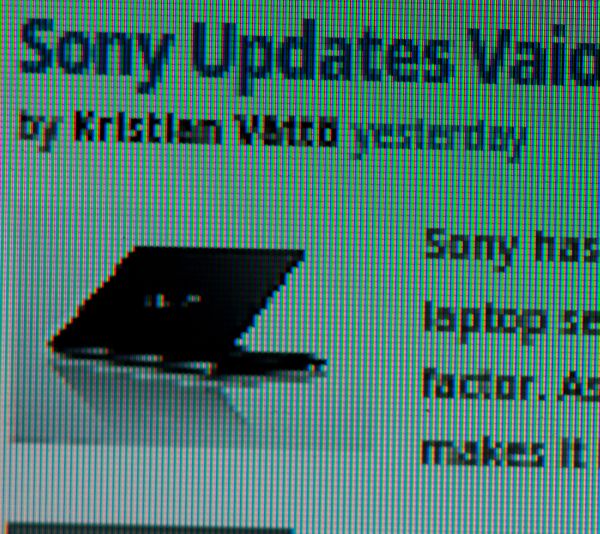
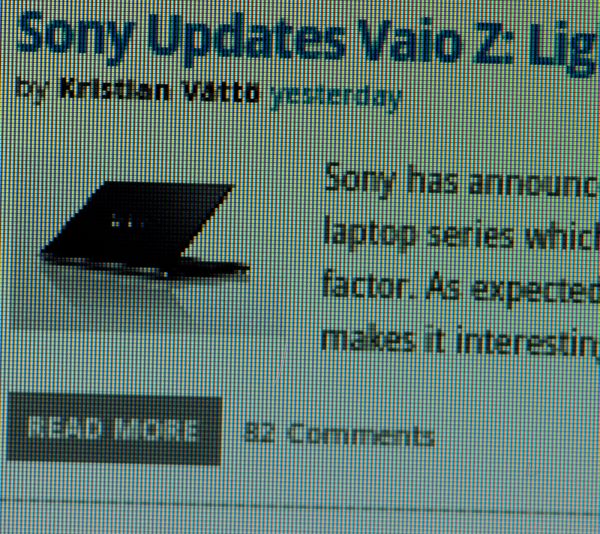
Same Magnification Images of Samsung Infuse (Left - WVGA 4.5"), HTC Sensation (Right - qHD 4.3")
Most high profile titles are agnostic enough to utilize the full 960x540 resolution. Twitter for example uses the entire display canvas, same with Angry Birds. One place where I was definitely appreciated that extra resolution was running remote desktop sessions using Xtralogic's RDP client.
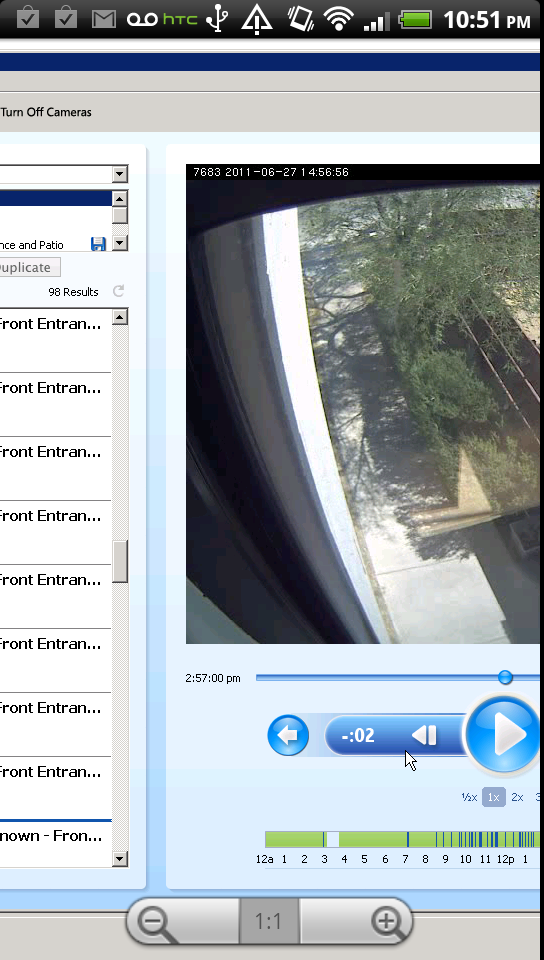
The other mode of operation is essentially 1:1 rendering - you end up with black surrounding the display, just like you do with apps on Honeycomb that don’t properly handle the radically larger display canvas. Take speedtest.net for example, one of my... ok I’ll admit it, my fourth most frequent application. Black bars around it.
I’m told by a number of sources that the next generation of Android tablets will have upwards of 328 ppi displays, so the time for Android developers to get this down pat is right now. 320 ppi is even there in the Android developer guidelines now, which seems to make QSXGA tablets a certainty.
Even first-party Android applications have some work to do. I’ve noticed that badges, icons, and previews in the Android market are noticeably (and at times smearily) upscaled. That’s to say nothing about how bad the application screenshot thumbnails have always look, which is even more exacerbated.
Anyhow I digress. Almost without exception, the extra PPI afforded by having a qHD display has spoiled me to the point where graphical elements now look cartoonishly huge on a similarly sized WVGA display. It’s incredibly apparent when looking at webpages zoomed all the way out - that extra resolution now makes text razor sharp and readable.
You can also really tell the development cycle for devices now. The iPhone 4 really catalyzed this high PPI craze on mobile, with its 330 PPI display. While qHD at 4.3” isn’t quite that high, 256 PPI isn’t anything to sneeze at either. It’s readily apparent to me that qHD is the Android handset maker’s answer to the retina display, and that answer has come almost a full year later. I spoke with HTC when we previewed the EVO 3D and Sensation about their development cycle, and they told me anywhere between 12 to 18 months is typical, from speccing out a phone, to development board, to reference hardware, shopping that around to carriers, to finally having a phone on store shelves. Given the time it took for us to start seeing qHD, 12 to 18 months seems about right.
The other part of the display story is outdoor viewing. Super AMOLED Plus has largely caught up to LCD’s outdoor readability (until overheat protection comes in and kills a quarter of the brightness, that is). In that regard, I consider the Sensation’s S-LCD panel and Samsung’s Super AMOLED Plus about equally matched. The Sensation could be better with a bit more backlight oomph and a better front glass AR coating. Honestly outdoor display quality remains less than stellar for everyone, especially in direct sunlight.
The Sensation includes lit capacitive Android buttons. You can tell the latest generation HTC phones apart from the last refresh based on the style of these buttons. The new ones are much more contemporary and modern looking. They’re sensitive but not prone to errant taps. I think the age of frustrating capacitive Android buttons is thankfully behind us.
There’s one final thing under the display category which is Mobile High definition Link support, or MHL. MHL is essentially an interface allowing up to 1080p video with HDCP and 8 channel audio out over USB. MHL equipped TVs won’t be available for some time, but in the meantime you can use an MHL to HDMI adapter and output to current displays. The Sensation is one of a small list (HTC Flyer, Galaxy S 2, and Samsung Infuse) of devices that include MHL support instead of a second micro-HDMI port.
I attached a dongle to the Sensation and found that MHL indeed does work. Unfortunately, the display size seems limited to 720p at present, so display side upscaling is required to fill the displays over 720p.
At present, the Sensation simply mirrors display output over MHL and rotates between portrait and landscape appropriately, though portrait is a bit disappointing since those 960 lines get compressed into a 720 pixel tall frame. It does work, however.


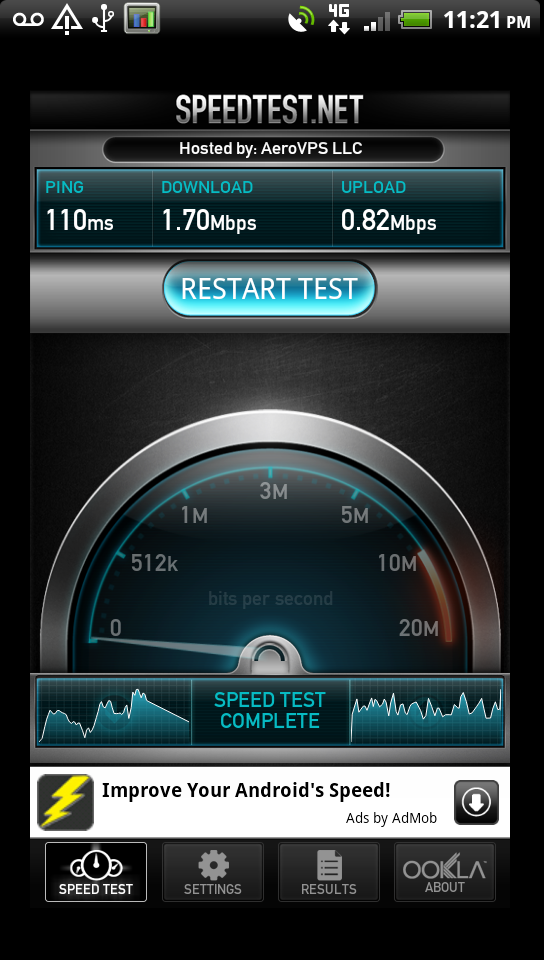







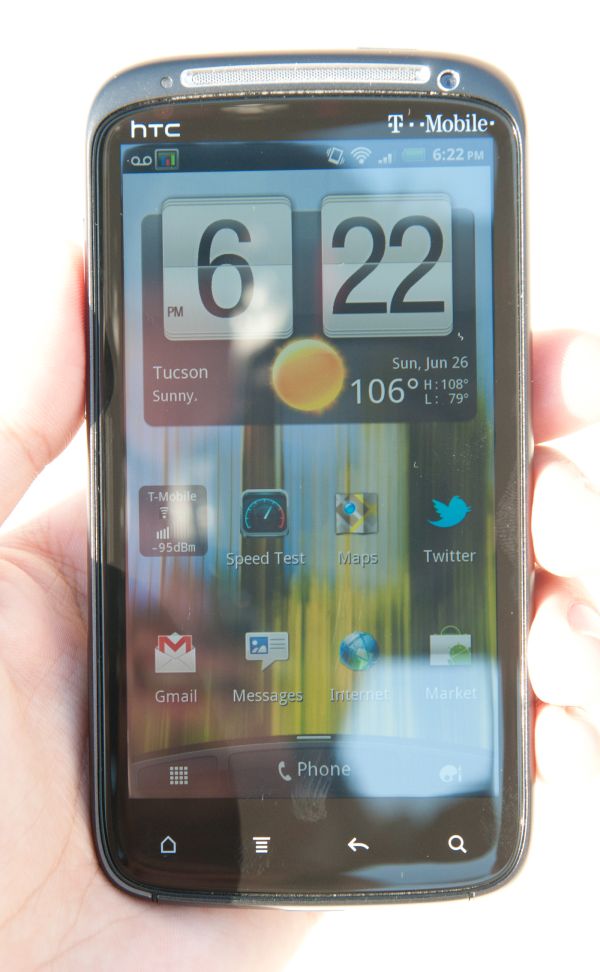
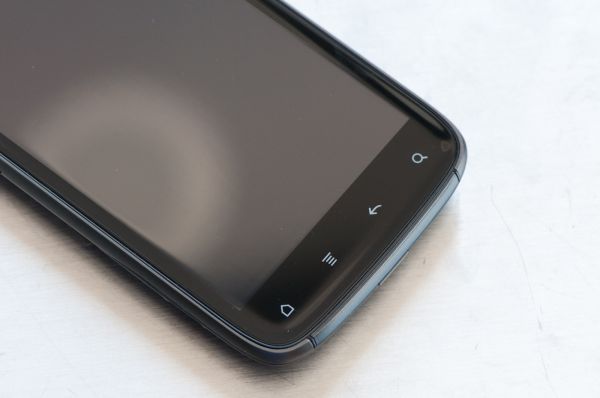
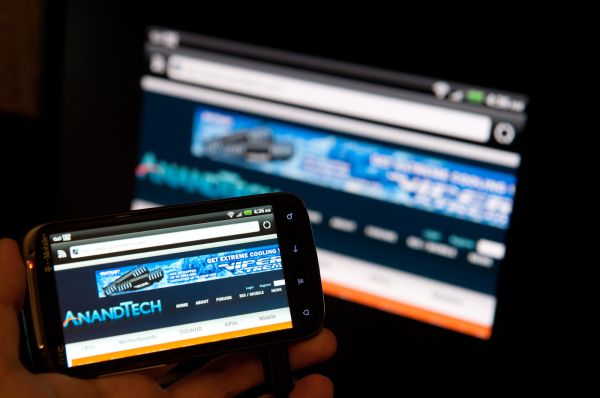
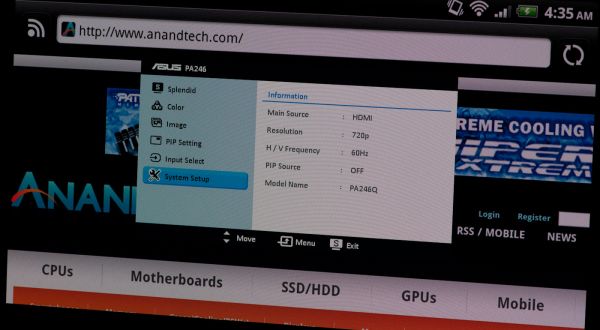








107 Comments
View All Comments
StormyParis - Friday, July 1, 2011 - link
and I was looking forward to getting the Sensation, especially for its big, high-rez screen.I'm thinking of going the Galaxy S 2 route instead:
- GS2 is much lighter (115 vs 150 grams). Less sagging pants and shirt pockets sound really nice (I currently have a 155g HD2)
- screen seems better: fewer pixels, but much better contrast and angles
- Samsung actively supports CM7, I'm not even sure if the Sensation is unlocked (HTC says they're no longer locking, I don't know if originally locked devices get an unlock)
- everything else seems broadly the same. camera maybe a bit better on the GS2
piroroadkill - Friday, July 1, 2011 - link
I personally think the HTC Sensation looks much nicer than the Galaxy S II, and it also provides all 4 Android buttons, which is more useful.Also, Sense 3 is a genuinely nice addition, so I REALLY don't understand the lust for AOSP based ROMs.
I know which phone I'll be recommending if people ask me...
kaworu1986 - Friday, July 1, 2011 - link
I actually registered just to post this, and here it goes:Sense (and the other skins) just need to DIE: they're bloated, ugly and inefficient (not to mention introduce bugs that stock Android does not have); worse than that, they are way of creating vendor lock-in and force users to upgrade hardware by withholding Android updates (a very clever trick to neuter one of the greatest advantages of Android, its open source nature).
Why can't OEMs just stick to do their job? People complain about the crapware OEMs install on PCs (which at least you can uninstall or just format) and somehow this is OK? Also, commodization is exactly what makes the PC ecosystem great: customers can shop around for the best price for their performance needs without having to worry about their devices being left without a software upgrade path or features unavailable. And with phone makers locking their bootloaders the last way of getting out of their death grip, custom ROMs, are being taken away from us.
Finally, I'd much rather rely on software written by a good software company (Apple, MS, Google) with 100s of engineers dedicated to the project than the much smaller team an OEM can afford to put on the job.
piroroadkill - Friday, July 1, 2011 - link
Well, I have a Desire HD, rooted, s-off, I can put whatever the hell I want on it...Oh, and I choose to use a sense based ROM with Sense 3. I've had a phone with pure CyanogenMod, it's all well and good, the point is, as long as the phone isn't horribly locked, and xda-dev get their dirty mitts on it, you can have whatever yo uwant!
piroroadkill - Friday, July 1, 2011 - link
Oh, that said, I don't use the launcher. I use Launcher Pro.Chloiber - Friday, July 1, 2011 - link
Exactly the same here, except I'm using a Desire (non-HD). I really like Sense. I rooted the phone about one year ago and was using Stock Android ROMs a lot. I really liked it. Now I returned to a Sense 2.1-3.0 mix and I like it even more. Some things are simply better with Sense. I also replaced the launcher with LauncherPro (also on Stock Android) because it gives you a really nice, smooth experience. In this regard, pretty much every stock browser, be it Sense or stock Android have failed thus far.@Brian
Strange that Brightness, Airplane Mode and Screen Rotation is missing, as it is included in Sense 2.1 (for example Desire S). But you probably already knew that, as you listed exactly the 3 things that are included there... :-)
shabby - Sunday, July 3, 2011 - link
Aosp ui is pretty archaic compared to touchwiz/sense, it lacks a lot of features that makes the phone more user friendly to the average person.Compare the aosp lockscreen to the sense3 lockscreen, which do you think the average person would want? Compare the widgets from touchwiz4 to the widgets of aosp... oh wait there aren't any in aosp. Catch my drift? Majority of users aren't like you and me that want a plain aosp/cm7 phone, so sense/touchwiz will never die, top selling phones will never be plain google aosp phones because that's not what majority of the public wants.
JasonInofuentes - Monday, July 4, 2011 - link
I think it's important to keep in mind that AOSP was designed with UI modifications in mind. It's not like HTC/Moto/Sammy/LG/Lenovo/Sony got their hands on source and went to work altering it against Goog's wishes. They wanted to be supportive of modifications to the OS from corporations and amateurs alike.Yes, the course was lost as manufacturers delayed updates in order to implement their UI, and some of the UIs were buggy, but then again lots of popular custom ROMS are buggy and users still love them. The point is, if there's value added, which in the case of Sense 3.0 and, by reports, the new Blur then it might be worth the cost to many. But devs should work with Google to make sure that their skins add without being too deleterious. Where I think all OEM devs should back off is in integrating social media streams; unless your implementation is decidedly better than the best social media apps then it's likely going to be a redundant, unwelcome presence.
mikehunt80 - Friday, July 1, 2011 - link
I don't think I've ever used the search button in previous devices, but I guess that's personal preference.I tried out the Sensation before buying the Galaxy S2. There was absolutely no contest. The S2 felt snappier browsing the web (A9 is 25% quicker clock for clock vs. A8/snapdragon), much lighter and nicer to hold without feeling cheap or creaking and I thought the screen on the Sensation was fairly poor in comparison. On top of that the S2 will play absolutely any video you throw at it, I'm told it'll even play 1080p mkvs and my 720p mkv Avatar makes people's jaws drop on the S-Amoled+ screen.
The Sense launcher is nice, but I use Go Launcher EX, which has most of the features of the Sense and is almost infinitely customizable. The Sense lock widgets screen looks nice, but is useless is you use pattern or pin lock.
Both great phones, but the S2 to the more rounded device for me.
piroroadkill - Friday, July 1, 2011 - link
Good point on the video compatibility.It best bloody play 1080p mkv though, since my dirt cheap chinese tablet (<$200) can play 1080p mkv without any pauses.
That's one thing a lot of the top tier devices miss, and I agree that that actually swings things in favour of the Galaxy S II..